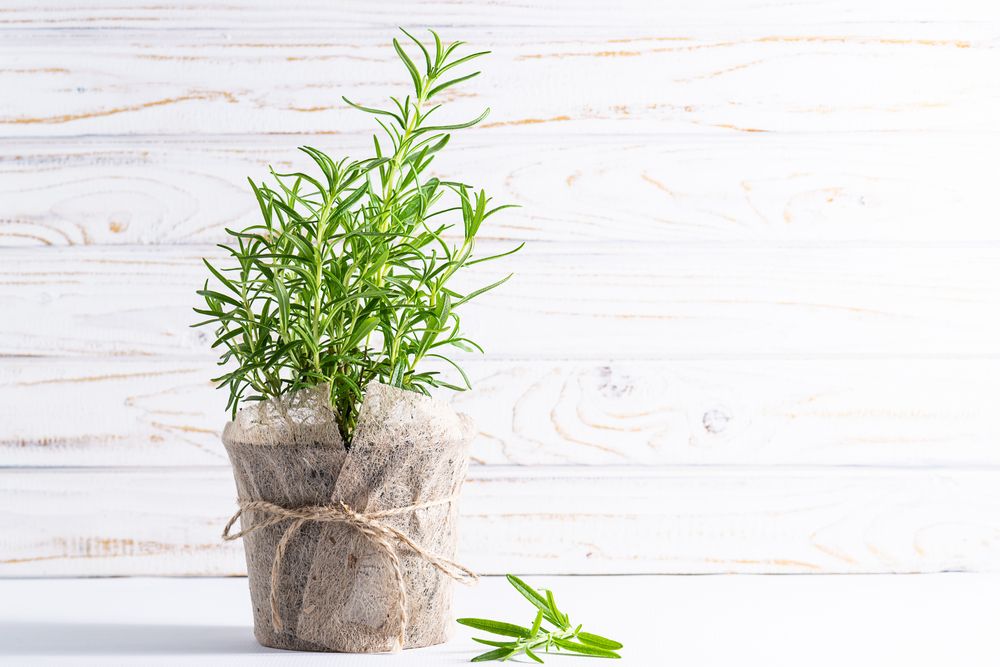Some plants are so versatile that they transcend season–rosemary is a great example. This culinary herb symbolizes remembrance for its lingering scent. With various uses, rosemary is an excellent gift for any plant lover, from culinary herbs to drought-tolerant landscaping.
Most think of rosemary in its culinary form. It stars in Mediterranean cuisines such as French and Italian, showing up in bread, vinegar, oil, and butter. It also pairs well with pork, poultry, and fish. Use a sprig as a garnish to elevate any plate; combine with simple syrup to add a craft twist to winter cocktails. Use long branches as skewers on the grill to impart flavor subtly.
Rosemary is also used as a landscaping plant in warmer climates. Head to the American south, and you’ll find it gracing the walkways of Charleston, South Carolina, and other cities year-round. Since it isn’t frost-hardy, In the north, rosemary is either treated as an annual and replanted each year or grown in a pot and taken inside when it freezes.
Most people think of the leathery needle-like leaves of rosemary, but it also produces blue or purple flowers. Depending on the variety, rosemary can reach up to six feet tall. Many nurseries sell rosemary trimmed into topiary shapes, which make great hostess or teacher gifts. Rosemary can also help repel pests such as mice and mosquitos, so it’s a welcome addition to nearly any environment.
So how do you keep rosemary alive and thriving? Here are a few tips from the pros at Plantscapers.
- Monitor water levels. Like most herbs, rosemary does not like soggy roots, so avoid overwatering. Many plants will come with decorative paper on the plant. Make sure to remove that as it will soak in water and keep it in the pot, causing overwatering. Instead, water sparingly, only when the soil is dry to the touch an inch down. Also, observe your plant. It will typically tell you when it is thirsty.
- Check to see if roots are peeking out of the pot. This means that it has outgrown its container. Move it to a bigger pot or plant in the ground so that it has plenty of room to grow.
- Rosemary loves cool weather but can’t withstand temperatures below freezing. They also don’t love indoor heat. The compromise is to keep them outside if the weather is consistently above 40 degrees. If you’re expecting a freeze, bring your plant inside for the night. If you’re in an area where you keep it inside for the winter, put it out when you know it will be relatively warm and rainy. A natural rain shower will revive your rosemary and remind it of its native environment.
If you follow these suggestions, your versatile rosemary will continue to grow and flourish for years to come, whether you plant it in a pot or plant it in the ground in the spring and dig it up when winter comes. Either way, this is a beautiful plant that will bring happiness and joy year-round. If you have questions, the Plantscapers team is happy to help!







